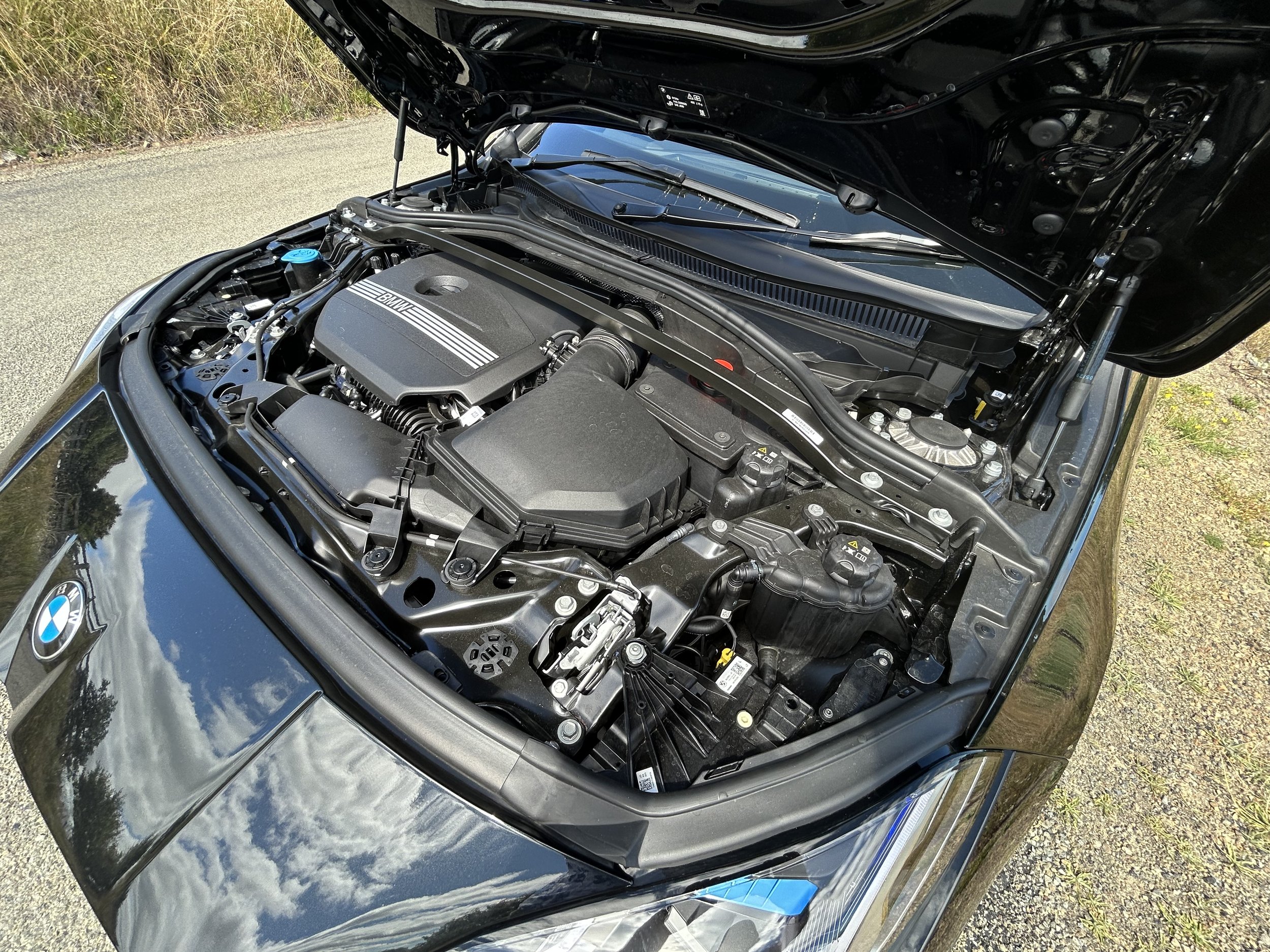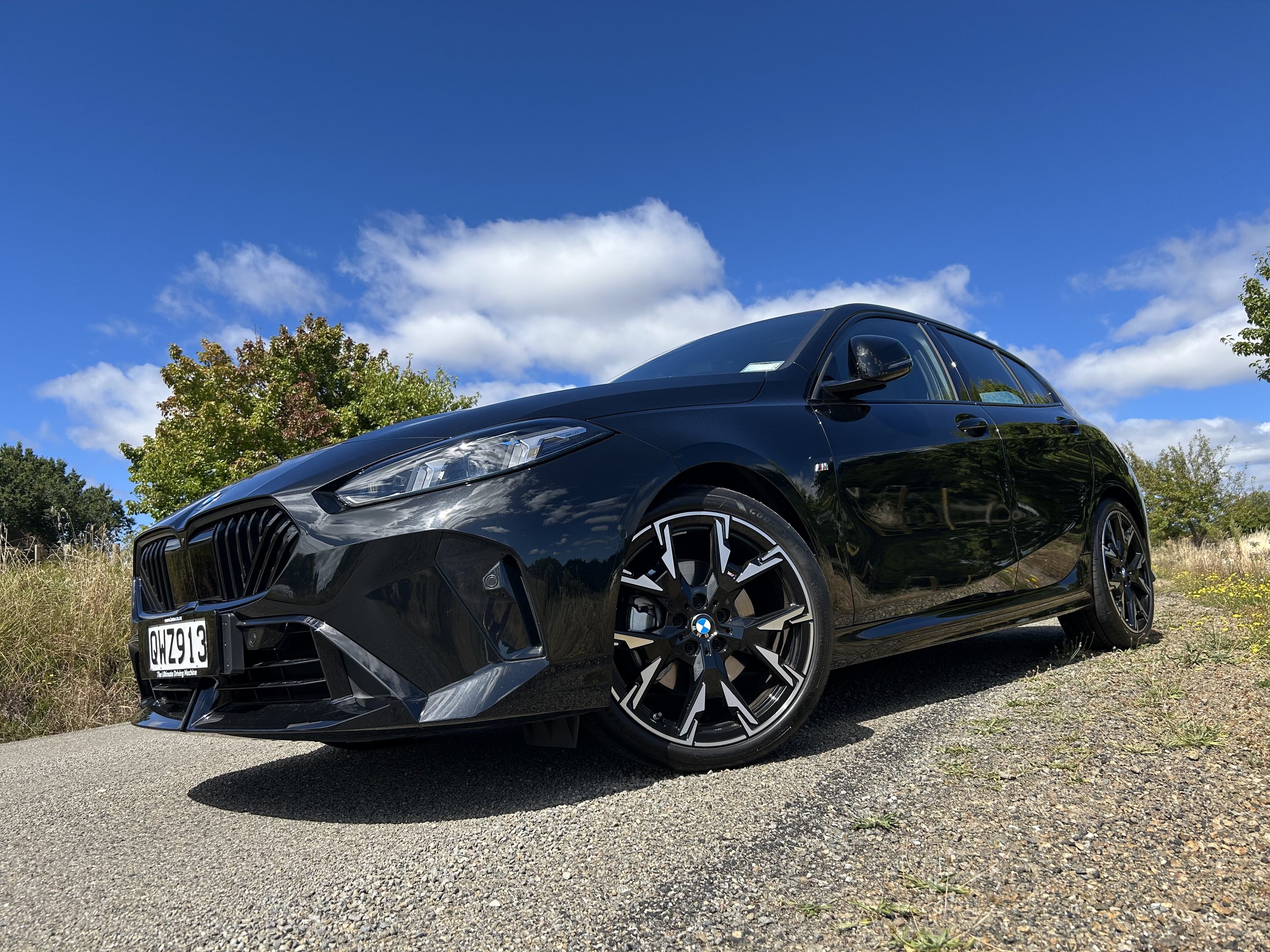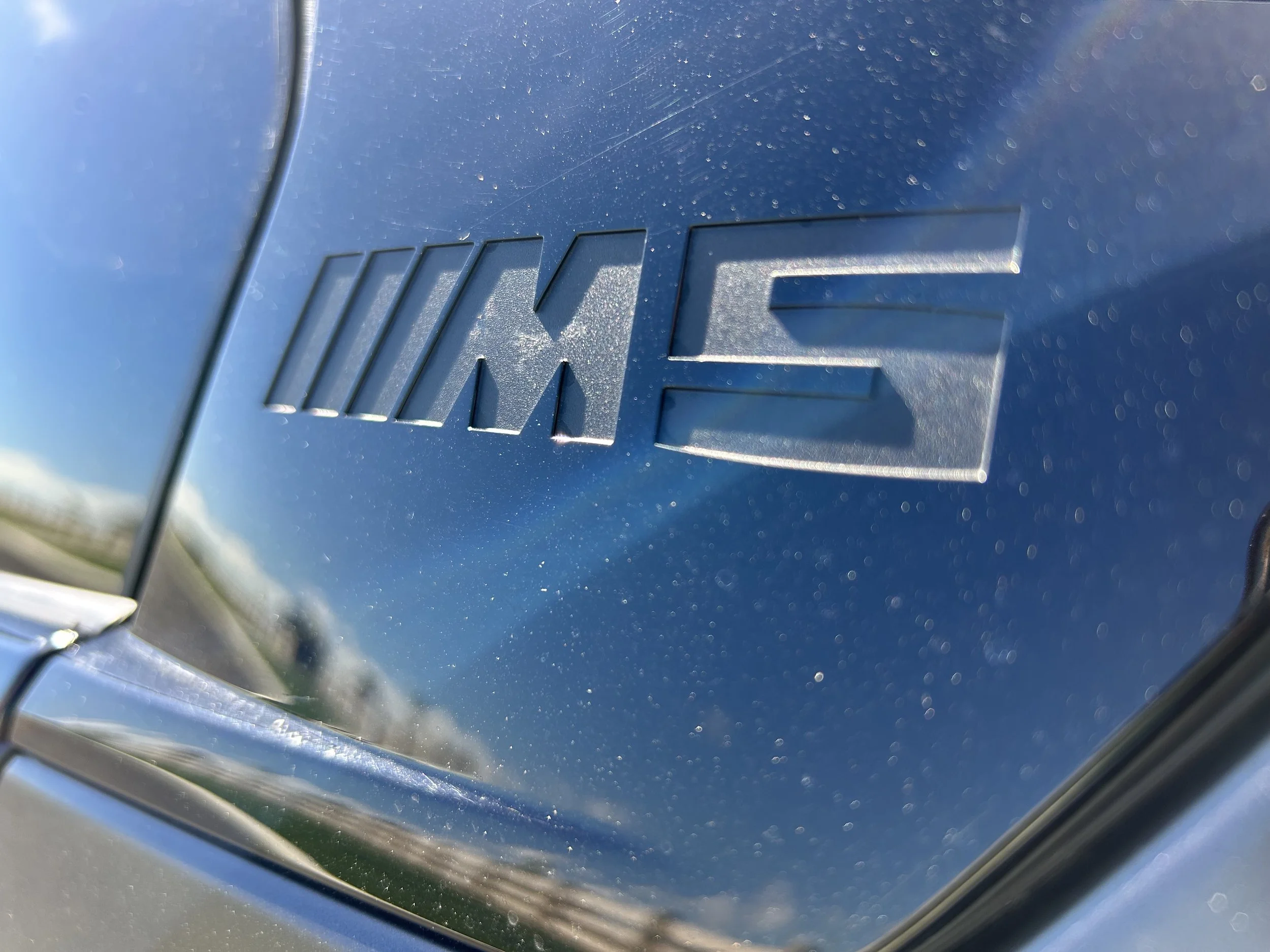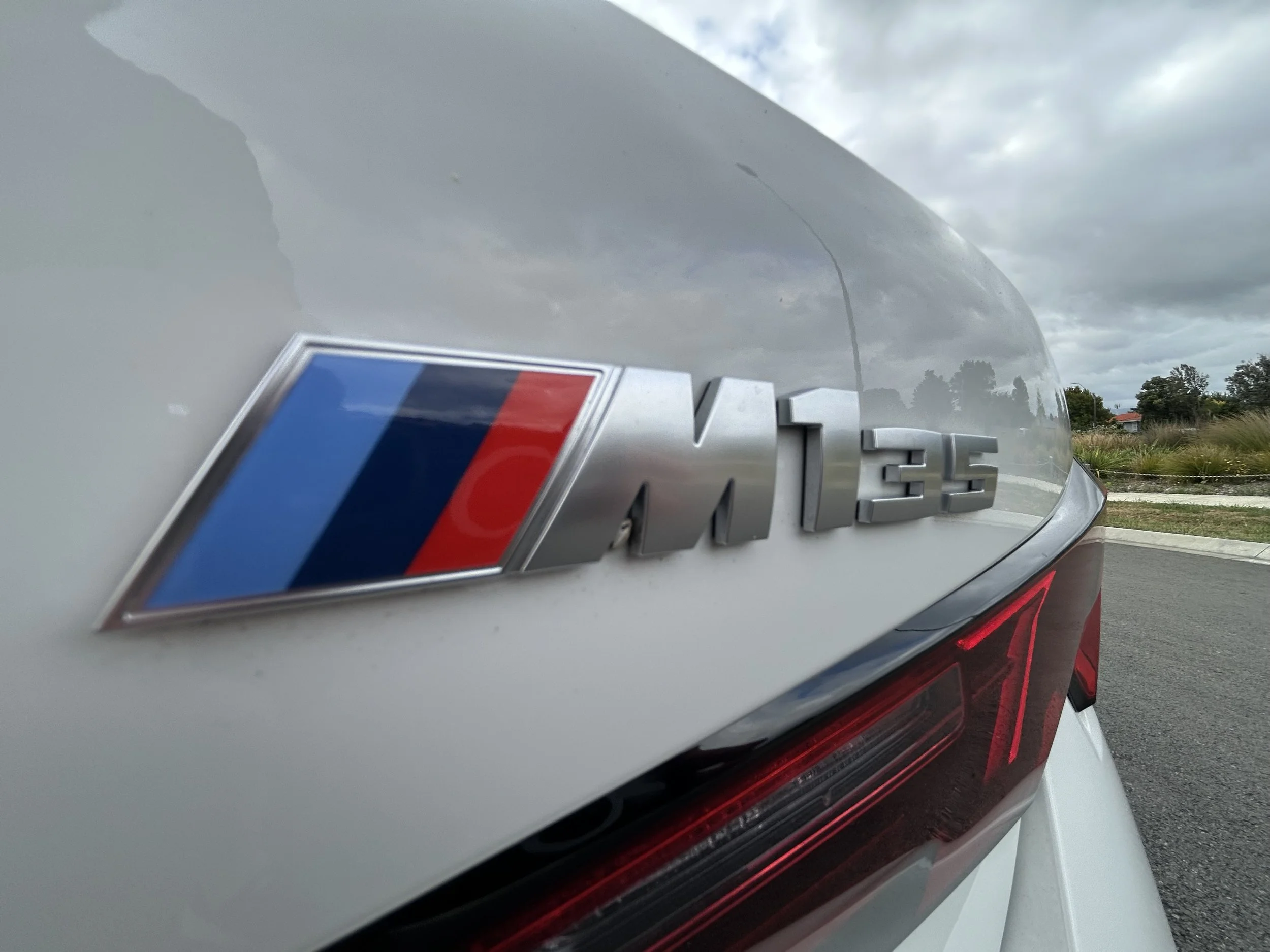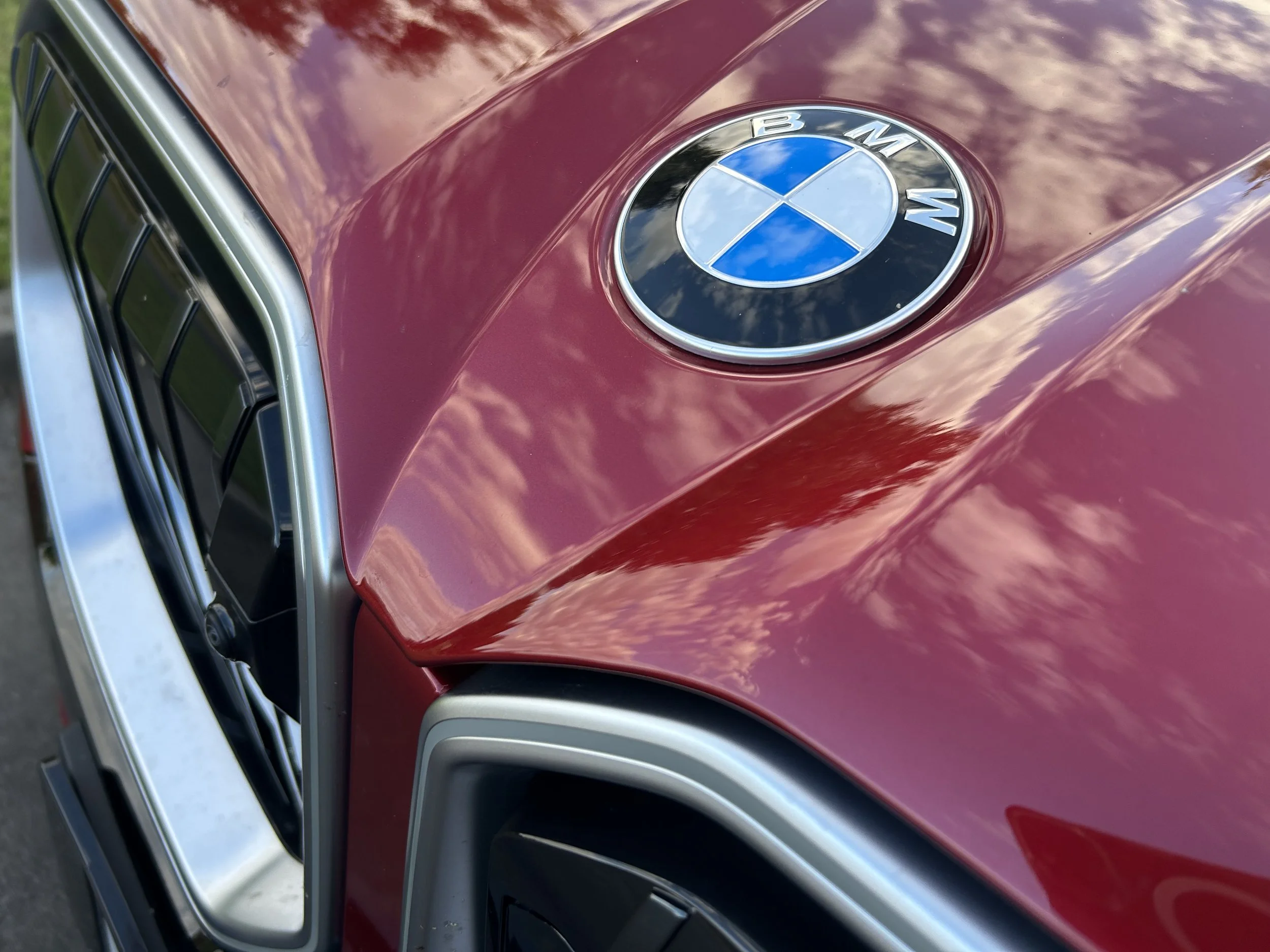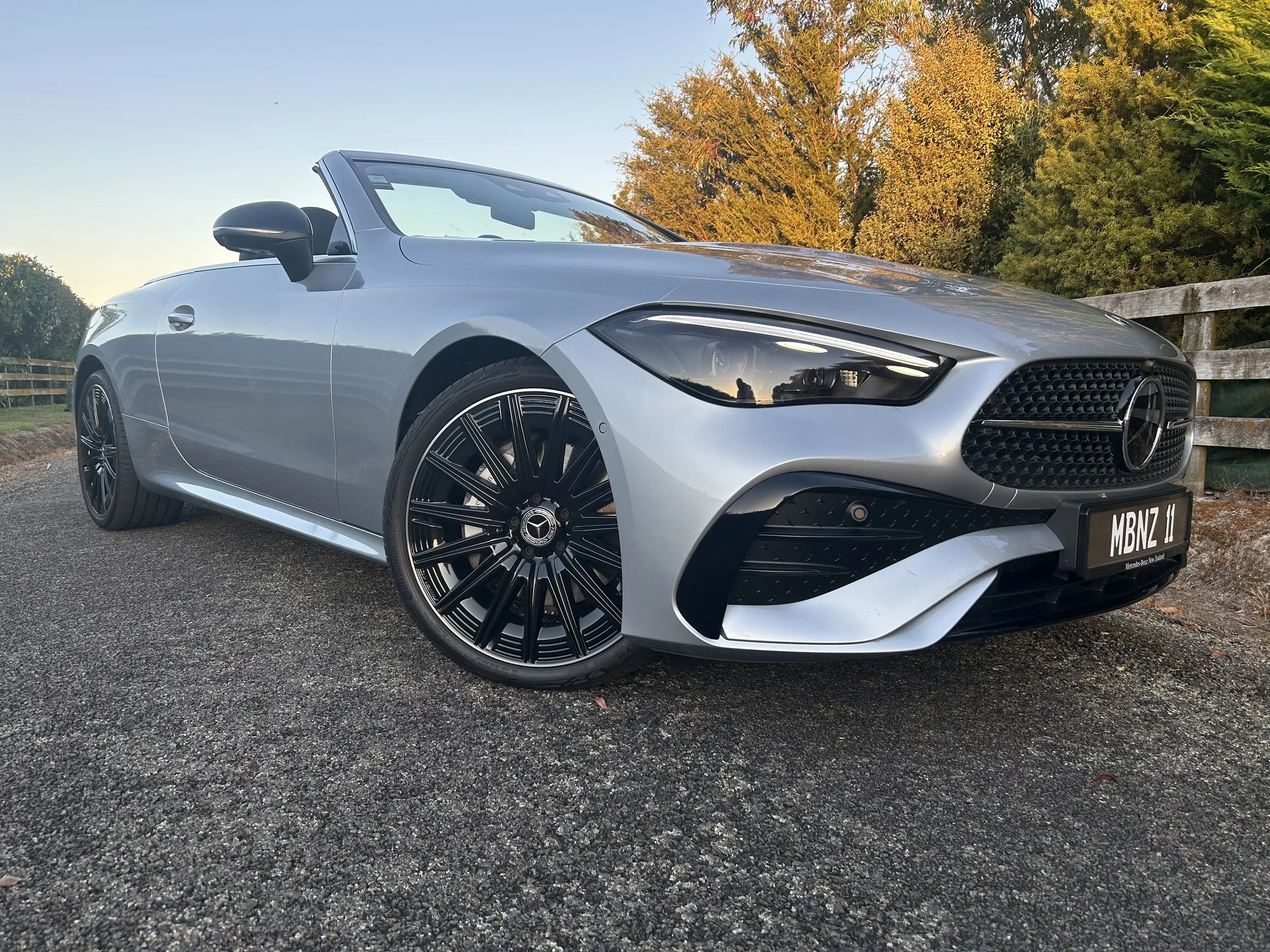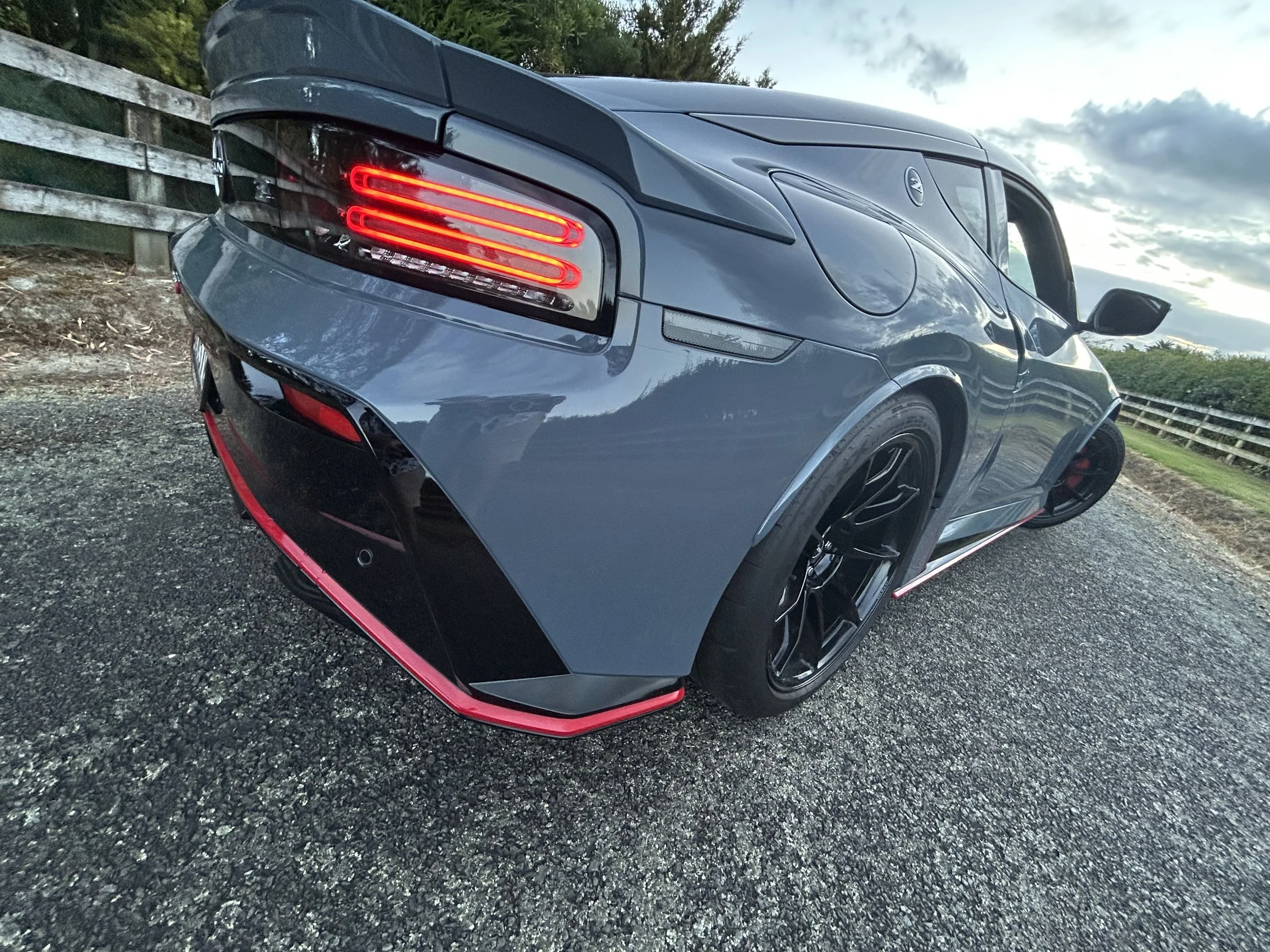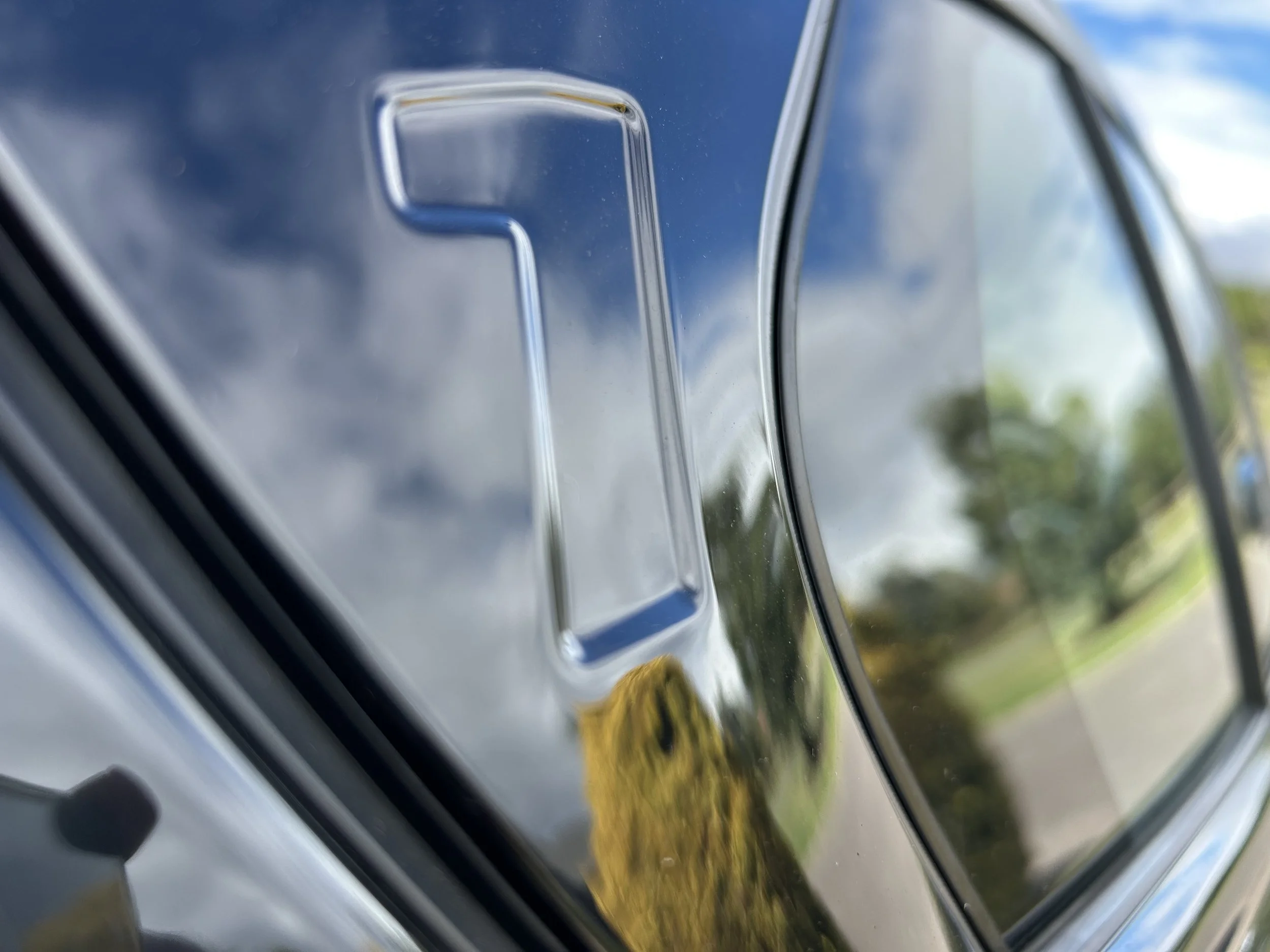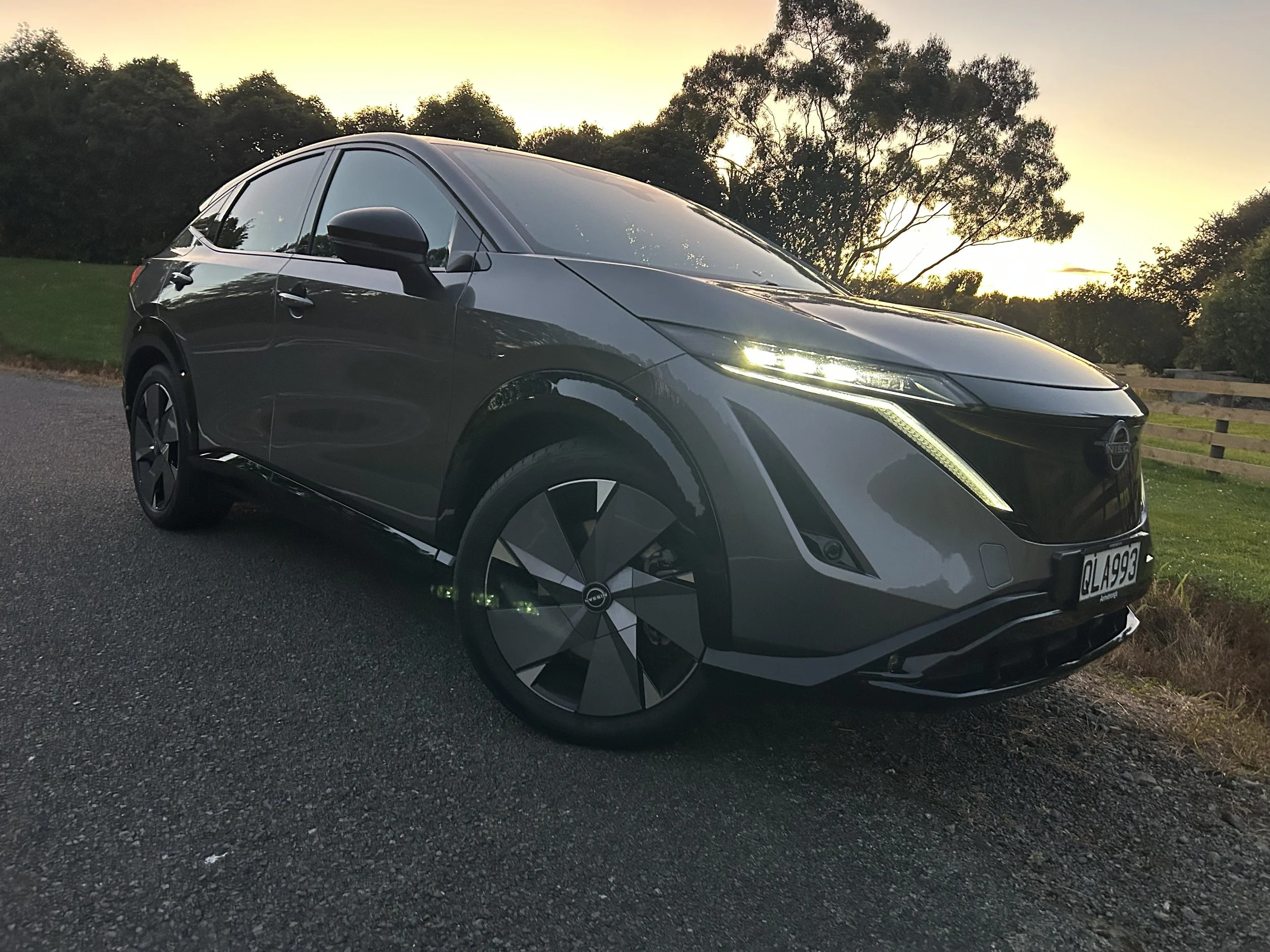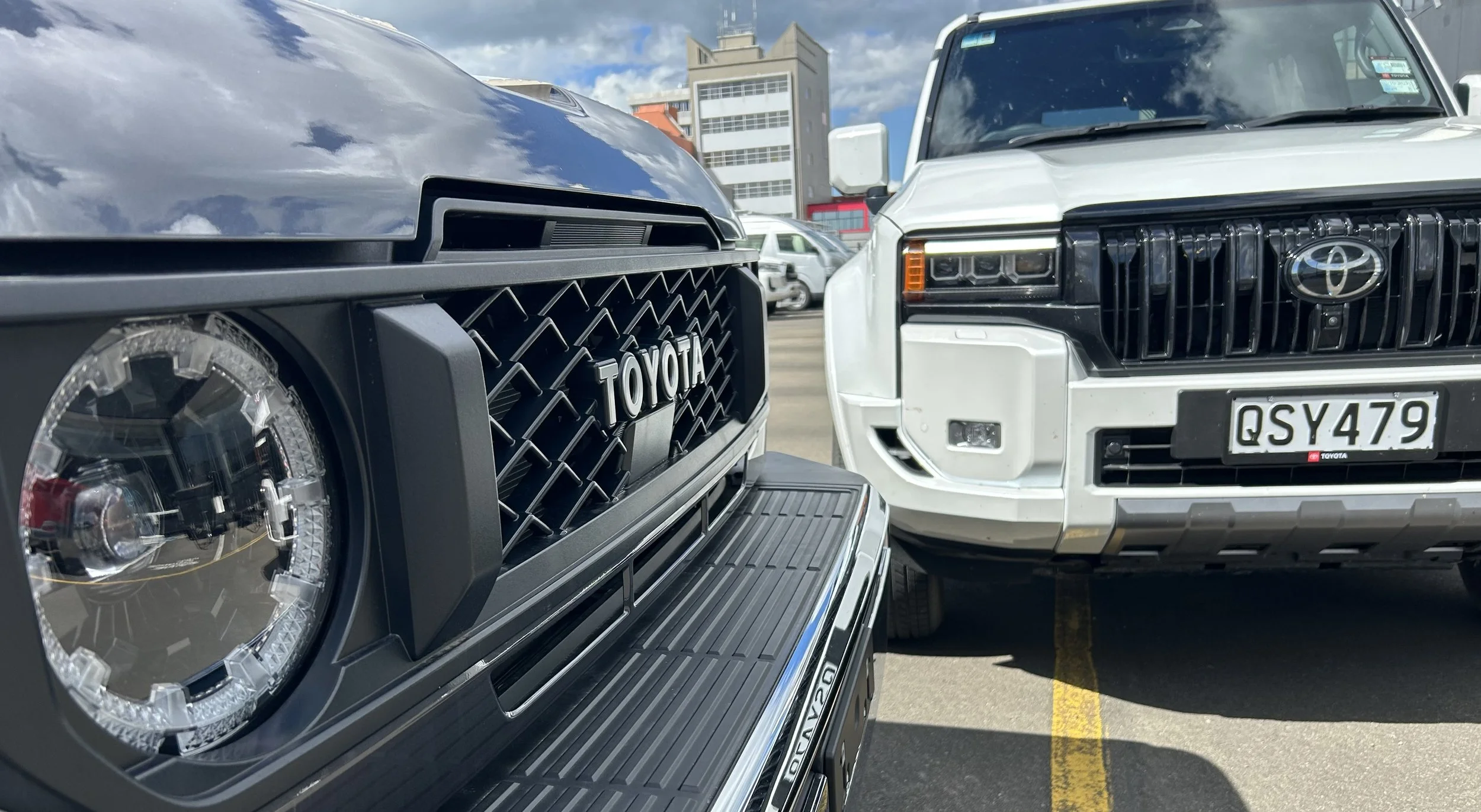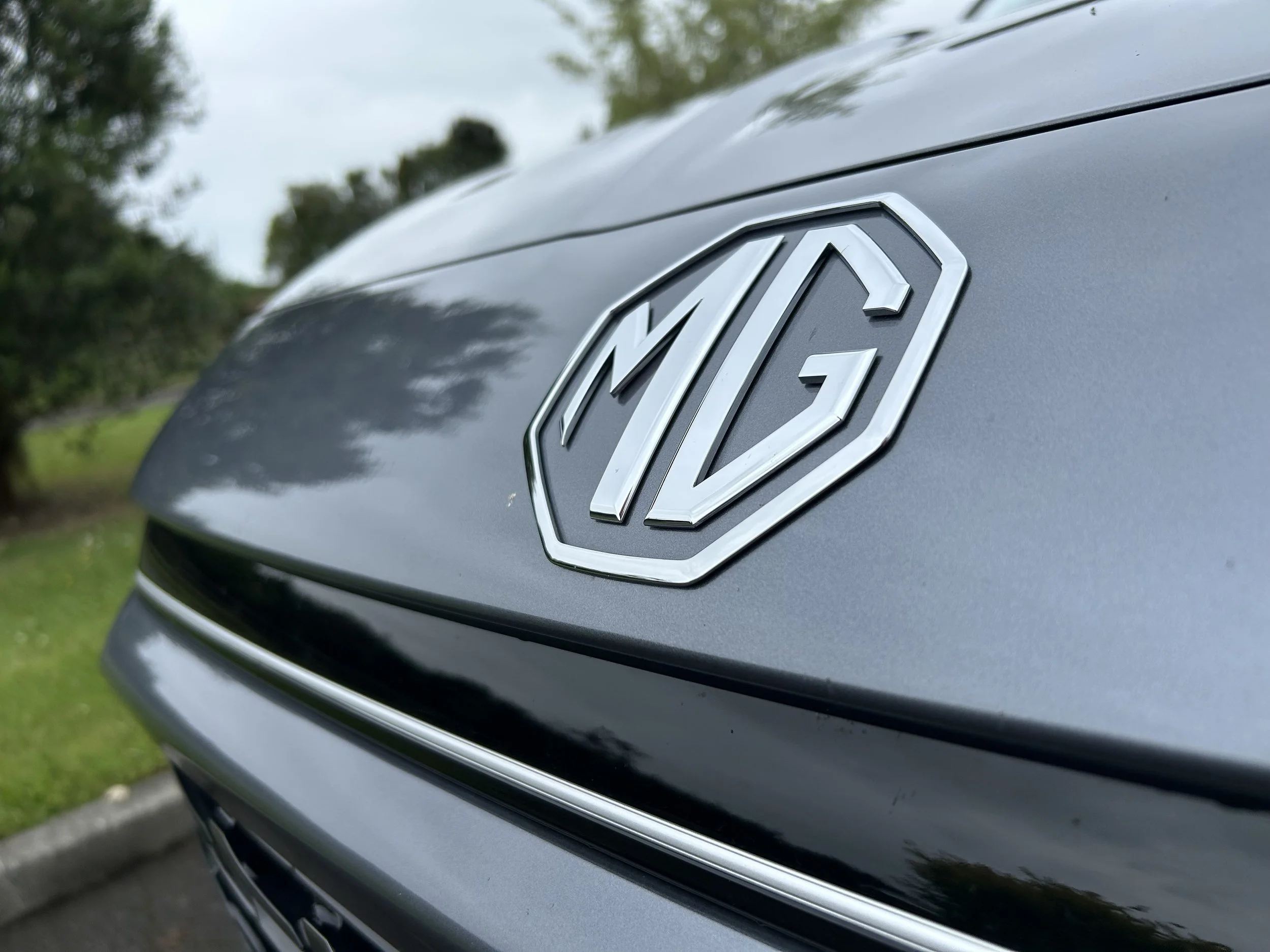BMW 120 M Sport roadtest review: Best-dressed baby
/A comprehensive revision has utterly revitalised this model.
How much: $68,900 ($75,400 as tested).
Powertrain: 1499cc three-cylinder petrol with 48 volt hybrid support; 125kW/280Nm, seven speed automatic.
How big: 4631mm long, 2070mm wide, 1459mm tall.
We like: Leaner and more modern look; a more upmarket product than its predecessor; effervescent and efficient drivetrain.
Not so much: As clever as the OS is, the fundamental of re-setting the trip meter is a brain-strain; fake engine sounds in Sport mode.
‘PREMIUM’ is a word that gets used far too freely by car brands these days - it’s only when you get into a car that’s properly befitting of the word do you realise just how cheeky some others have been.
Here’s the BMW 120 M Sport. If you think every element of that speaks to top dollar, you’re bang on. BMW seeks $68,900 for this car in its factory standard form, rising a further $6500 for the optional equipment this example carries. That’s a big spend for a small car. obviously, you really want to see and feel the value to make it worthwhile.
Good news, by and large you can, and quite easily, too. That’s not always been the case with the 1 Series by any means; in the 20 years since this line was first rolled out, there have been some gems … and also some editions that really struggled to warrant their stickers.
With 2025, comes a major refresh for BMW’s baby car. And it’s been very well done. So much so this is one those stories where it’s pointless building up to a last sentence plot twist. There isn’t one.
Yes, they’re asking a lot for this. And yes, that means it will be unaffordable to many. Nonetheless, for those who are prepared to pay … well, you’ve done pretty well, really.
Sure, there are a few foibles and flaws. The step up to a mild-hybrid format means the boot has become a bit tight. I’d agree with other commentators who note that some - not many, but enough to be noticed - of the cabin plastics could be better. And, as per usual for any sportified hatch, the upgrade to firmer suspension and wider tyres delivers cost in road noise on any kind of coarse chip, though not unbearably.
But, overall, the ‘p’ word that you’ll hear as explanation why it carries a higher price over anything comparable from Japan, South Korea, China and, by lesser margin, out of Europe (A Volkswagen Golf R Touring isn’t that much cheaper these days) really seems to be warranted. There’s an unquestionable breadth of talent that makes it difficult to dislike.
Polished? Yes, it really is. And that’s not just in respect to the appearance and the driving spirit. It’s also due to the technology, most immediately strikingly within the cabin but also under the bonnet.
Hard to say if this version of the ‘1’ is … well, the absolute one. BMW New Zealand also has a M135 in the mix, which is pricier still but also very racer; far sportier than this 120 even with the M Sport treatment. If budget was not a consideration, the family flier would probably be irresistible. I’ll get back to you.
Meantime, in Munich’s mindset, the 120 is the more internationally important, not least because it gets a 1.5-litre three-cylinder producing 125kW/280Nm thanks partially to the addition of a 48 volt mild hybrid system, and a seven-speed automatic gearbox. This first-to-type implementation delivers with a 15kW electric motor housed within the gearbox.
The output figures are decent for a car of this size, and that’s important when you’re running with this badge, but Munich mindset these days is also heavily focused on efficiency, which it also seems to nail.
Around 450 kilometres of driving, which blended urban with open road, including a four hour stint at mainly highway speed, delivered an average of 6.6 litres per 100km for the week’s running. That’s 0.6L/100km shy of the make’s claimed optimal; a pretty respectable effort in my book.
Clearly that’s a tick for the electric involvement though, in saying that, as hybrid’s go, this system isn’t one of the most overt. As is typical, it uses an electric motor to fill in the gaps of the petrol engine’s power delivery and improve the effectiveness of the start-stop system, but it’s never enough to power the car on battery power alone; no chance of slipping off quietly on battery-fed impetus. When you cold start in the morning, the engine engages straight away.
Many cars do not get so close to their cited best in everyday running and, assuredly, this one was not being driven with any particular thought to thrift.
So it’s doing that job. It’s also meeting brand fan expectation in being quite a nice thing to sit behind.
By now we are surely well settled into accepting small capacity engines that feel big-hearted, but BMW’s triple has always been one of the better ones. None of that character has been lost with marriage to this mild hybrid set up. There’s more than enough eagerness to keep up with traffic, and the three-cylinder makes a smooth and refined thrum when it’s pushed. The eight-speed automatic is a decent accomplice, as well.
The powertrain’s installation ties to with a very comprehensive facelift. Was I alone in thinking the 1-Series prior to its plastic surgery seemed a bit guppy-ish? Anyway, with a new, low nose and sharp features it’s not now. From reception during my time some will argue it still looks a bit odd, because the grille sits so far below the windscreen, but that view seems evenly split. And, anyway, what appeals to me is that the brand has refrained from oversizing that grille too much. A response to feedback?
The rear quarters have also reshaped, to deliver a slightly more muscular look, complete with new two-part taillights and a new rear number, behind which the exhaust tucks.
As is the modern way, the 1 Series’ cabin has been very comprehensively revised; all in all, it’s quite the upgrade, given how much it now centres so heavily on technology.
And how. The ‘Curved Display’ features prominently, combining the touchscreen and digital instrument cluster in one housing, to point there’s very little else on the dashboard. You’d be forgiven for thinking everything has been delegated to the touchscreen, with just a few buttons on the centre console and steering wheel.
The big screen operating the latest ‘Operating System 9’ software means the main portal contains dozens of app-style touch points to a myriad of operabilities. These could be quite a distraction, so much so you might argue with head office contention that this concept is “calmer” than before. What, of course, they mean is that the dashboard as a whole is more minimalist.
Before getting into that, kudos to BMW for screens that are exceptionally sharp and quick to respond. Also, there are useful configuration options.
In particular, you can arrange the driver’s display pretty much just the way you like it. Being able to view the information you want to see in a style that suits isn’t always a given, even in cars of this level of tech.That includes finessing the head-up display, though its layout also changes depending on which driving mode you’re in.
As with all intensely screen-centric systems, it inevitably adds fuss to some functions you found so easily achieved with a button and orthodox controls. That’s particularly obvious in respect to operating the climate control, which in the previous car utilised switchgear.
Now the touchscreen becomes the conduit for even something as simple as altering the temperature and fan setting; a functionality which is likely more time-consuming and more likely to divert your attention.
What’s clever, all the same, is that the chosen temperature is always represented on the screen, no matter what else you’re using it for: Navigation, media displays or whatever.
In any event, as much as this is a touchscreen inviting to be touched, you needn’t work it that way, as the car retains an iDrive rotary controller in the centre console.
This is what you absolutely should be using once you’ve learned your way around. Utilising it is far less likely to result in distraction, as once there’s enough familiarity you can navigate the screens almost by touch.
All the same, one quibble is that, when you use it to change driving modes, it remains on the driving mode screen until you navigate back to another view. Still, in spite of these gripes, this remains one of the best systems in the business.
The 120 is loaded for the spend; this is a full plate car. As standard it takes a 360-degree camera with a very high quality representation, electric front seats, an automatic tailgate, a smart adaptive cruise control, ‘Veganza’ vegan leather upholstery, sport-style front seats, 18-inch wheels and LED lights all round.
The test car’s ‘Enhancement Package’ supplanted the regular rims for 19-inchers that will be irresistible as they not only fill the wheel arches more comprehensively but are smarter styled. You also achieve a panoramic glass roof with a sliding inner cover to keep your head from being burned, an impressive lumbar/massage support for the driver and front passenger, lane-keep assistance and a Harman/Kardon stereo.
All that kit, and the flash screens, will raise satisfaction, likewise how the ambient lighting integrates into the trim.
As said there are some plastics that do look a bit down market, most obviously the stuff around the centre console, but it’s not too jarring and you cannot deny the build quality is every bit as good as you'd hope.
One weirdness is the new air vent control design; I like clever engineering but, in this instance, it just seems a touch overdone.
The 1-Series now reminds how small cars these days are larger than they used to be. In saying that, the cabin is cosy for four adults; anyone sitting behind a tall driver might find themselves poorly served for foot room, as the driver’s seat will likely have been be positioned low.
Despite it being unquestionably premium, it can still work as a family car. BMW’s thought about this car being a potential consideration for young families seems to be behind the 120 having three ISOFIX child seat mounting points; one each in the outermost rear seats, another in the front passenger seat.
The hybrid battery slots under the boot floor, and though it is small, it nonetheless reduces the capacity to 300 litres. At least it’s quite a deep, rectangular spot, with a cover to hide anything valuable. Folding down the rest seat backs makes for a considerably larger space; ultimately up to 1200 litres.
The M Sport provision delivers Adaptive M Suspension to sharpen up its responses. Undoubtedly the M135 will be more engaging, but as is the 120 has all the hallmarks of a car that has been developed by people who enjoy driving. There’s probably more grip than is needed, but also limited body lean and precise steering that gives you immense confidence in the car underneath you. In respect to all that, it’s an improvement over the old car; the UKL2 architecture has been around for a while, but in this format has benefit from body stiffening and suspension retuning.
The brakes can at times feel a bit odd when the hybrid system juggles with the amount of brake energy regeneration in use and, as mentioned, on this suspension it feels just a touch stiff. It isn't outright uncomfortable or harsh, so you don’t feel the road surface through your seat, but you will hear road roar.
BMW’s driver-focused mindset has positive influence on the calibration of its driver assistance tech; it has the usual full provision to keep you safe, but nothing’s overly obtrusive. The remit is to keep the car feeling calm and natural. So it won’t try to fight you with feisty lane keeping kickback, or endless electronic warning bongs. So good.
This one has yet to assessed by Euro NCAP, the independent European safety organisation whose findings will undoubtedly be considered for adoption by our regionally-prioritised Australasian NCAP.
Why need for a fresh test? That reflects the development history. BMW calls this a new-generation car, others contend it is more correctly a facelift of its predecessor, which in 2019 was the first in the lineage to make the switch from rear- to front-wheel drive.
Nonetheless, it has altered significantly: Perhaps the doors carry over over from the old model and the body structure looks similar, but front and rear fascias and the interior arevall new, and every powertain has updated.
So, if it still shares plenty with the predecessor, it also delivers much that is different.
It’s pricey, but perhaps the best the 1 Series has ever been. A key attraction is that it benefits from adoption of features first introduced to the market on significantly more expensive cars. With OS9, it’s among a handful of choices in which you can affect control using your phone. That’s leading edge smart.





